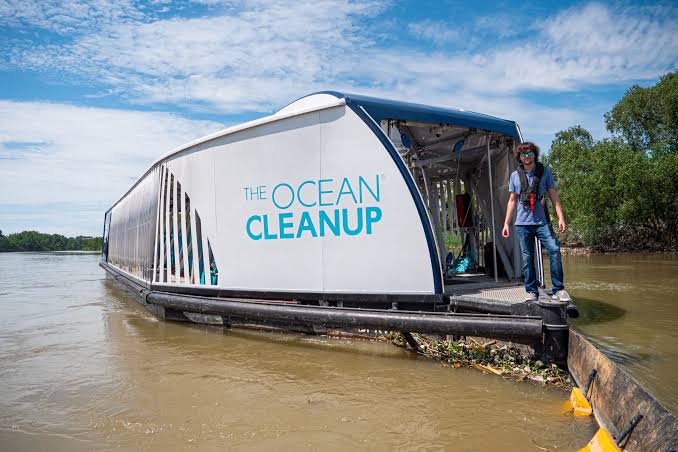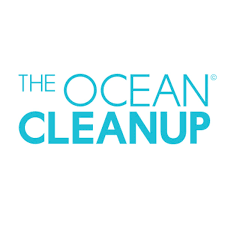Imagine looking out at a vast ocean, expecting to see endless blue waves, but instead, you’re met with a floating sea of plastic.
It’s disheartening, right?
But that’s the reality we face today.
The ocean is choking under millions of tons of plastic waste, affecting marine life and, eventually, us.
This is where The Ocean Cleanup Project steps in.
If you’ve been wondering what exactly this initiative does and how it’s working to clean the ocean, you’re in the right place.
Let’s look into the heart of the project and why it matters now more than ever.
What Is the Ocean Cleanup Project?
The Ocean Cleanup Project is a bold initiative founded by a then-teenager, Boyan Slat, in 2013. It started as an idea to remove plastic from the oceans but has since grown into a fully-fledged solution that’s making waves in environmental innovation.
The Ocean Cleanup Foundation, a nonprofit, leads this effort, and their mission is simple yet incredibly ambitious: to clean the ocean of plastic waste.
They’re not just about short-term fixes; they aim to remove 90% of the floating plastic in our oceans by 2040.
The project focuses on cleaning both ocean and river systems, understanding that rivers are the arteries that bring plastic into the seas.
Addressing both these sources ensures that they’re attacking the problem at its root and downstream levels.
How Does the Ocean Cleanup Work?

The main strategy of The Ocean Cleanup is built around using advanced technology.
Sounds complicated? Let me break it down.
Their main tool is a floating system that captures plastic waste without harming marine life.
Their approach isn’t just about scooping up plastic—it’s about a long-term, scalable way to ensure that cleaning the ocean can happen consistently and efficiently.
And here’s the kicker—they’ve already removed tons of plastic from the oceans and rivers globally!
Here’s how it works in simple terms:
1. Floating Barriers:
These floating systems are deployed in areas where ocean currents naturally gather plastic, like the Great Pacific Garbage Patch.
The system acts like a giant net, capturing plastic waste while allowing sea life to pass underneath safely.
2. Natural Ocean Currents:
Instead of relying on powered machinery, The Ocean Cleanup uses ocean currents to move plastic into the system.
It’s eco-friendly because they don’t need to use external energy, which means the process is sustainable in the long run.
3. Processing the Waste:
Once collected, the plastic is brought to shore, where it is sorted and recycled.
The Ocean Cleanup is even working on turning that recycled plastic into products to fund their operations further.
Talk about a full-circle solution, right?
Want to take control of your energy use and contribute your quota to reducing the excessive heat plaguing the planet? Switch to solar power with our top-notch, affordable solar panels! Start saving on your bills and reduce your carbon footprint today.
It’s simple—just click here to see how easy it is to make the switch and join the solar revolution. Let’s power up for a greener tomorrow!
Why Is Ocean Cleanup So Important?
You might be thinking, “Why should I care about cleaning the ocean?” Well, it’s not just about having pretty beaches and clear water for vacations.
The effects of plastic pollution ripple through the ecosystem, and here’s why it matters:
1. Marine Life Impact:
Thousands of species mistake plastic for food, leading to suffocation, poisoning, and death.
Sea turtles, for example, often confuse plastic bags with jellyfish.
Cleaning the ocean directly protects these animals from a slow and painful demise.
2. Human Health:
Yes, you read that right. The fish and seafood we eat are now increasingly found with traces of plastic.
That’s right—plastic is entering our food chain, and studies are still uncovering the long-term effects of this.
Cleaning the ocean also means protecting our health.
3. Environmental Balance:
The ocean plays a critical role in regulating our planet’s climate. By keeping it clean, we help maintain its ability to perform essential functions like absorbing carbon dioxide and providing oxygen.
River Cleanup: Tackling the Problem at Its Source
One major component of The Ocean Cleanup’s work is focusing on rivers, which account for about 80% of ocean plastic.
The project uses specially designed interceptors that catch plastic waste in rivers before it ever reaches the ocean.
These interceptors can extract up to 50,000 kg of plastic per day from a single river.
By focusing on rivers, The Ocean Cleanup addresses the problem before it spirals out of control. Think of it as preventing a small leak before it becomes a flood.
Real Results from The Ocean Cleanup
The beauty of The Ocean Cleanup Project is that it’s not just theory—it’s already in action, and the results are tangible.
In 2021, their team successfully collected over 100,000 kg of plastic from the Great Pacific Garbage Patch alone.
That’s a huge win for our oceans!
But this is just the beginning.
They’ve also rolled out river interceptors in some of the world’s most polluted rivers, including those in Indonesia, Malaysia, and Vietnam.
The goal?
To have 1000 rivers equipped with their cleanup systems within five years.
How Can You Support the Ocean Cleanup?
You might be wondering how you can be part of this movement to clean the ocean.
Thankfully, there are a few simple ways to contribute:
1. Reduce Your Plastic Use:
Start by cutting down on single-use plastics like straws, plastic bags, and bottles. Every little bit helps.
2. Donate or Support the Ocean Cleanup Foundation:
Every bit of funding helps them deploy more systems and continue their research.
You can visit their official site here to find out more.
3. Spread Awareness:
Share this information with friends and family. The more people know about the plastic pollution crisis, the faster we can solve it together.
4. Recycle and Participate in Local Cleanups:
Recycling and participating in beach or river cleanups in your community contribute directly to the broader mission.
Want to take control of your energy use and contribute your quota to reducing the excessive heat plaguing the planet?
Switch to solar power with our top-notch, affordable solar panels! Start saving on your bills and reduce your carbon footprint today.
It’s simple—just click here to see how easy it is to make the switch and join the solar revolution. Let’s power up for a greener tomorrow!
The Future of The Ocean Cleanup Project
So, what’s next for The Ocean Cleanup Project? With ambitious goals to scale up their operations, Boyan Slat and his team are committed to expanding their efforts globally.
They aim to have a cleaner ocean by the next generation—a future where our children can look out at the ocean and see only endless blue, as it should be.
But cleaning the ocean is not something they can do alone.
It requires global participation and innovation at every level—from governments, companies, and individuals like you and me.
The Ocean Cleanup isn’t just a project; it’s a movement for change, and it’s one we all can be a part of.
Final Thoughts
The Ocean Cleanup Project represents hope in the face of a growing environmental crisis.
It’s a shining example of how innovative thinking, paired with relentless determination, can start solving one of the world’s most pressing problems—plastic pollution.
While the road ahead is long, the steps being taken today are laying the foundation for a cleaner, healthier planet tomorrow.
So, the next time someone asks you about The Ocean Cleanup or why it matters, you’ll have plenty to tell them.
Together, we can ensure the ocean remains not just a beautiful place to visit, but a thriving environment for all life on Earth.
Now that you’re equipped with everything you need to know about The Ocean Cleanup Project, consider checking out their latest updates and how you can get involved here. Let’s clean the ocean—together.
